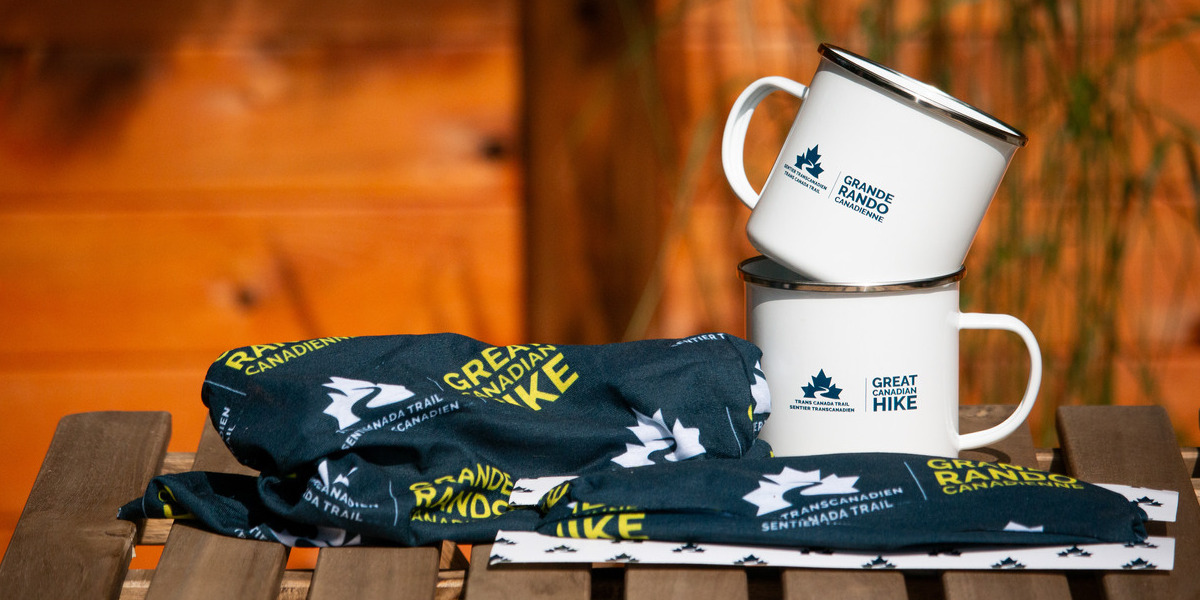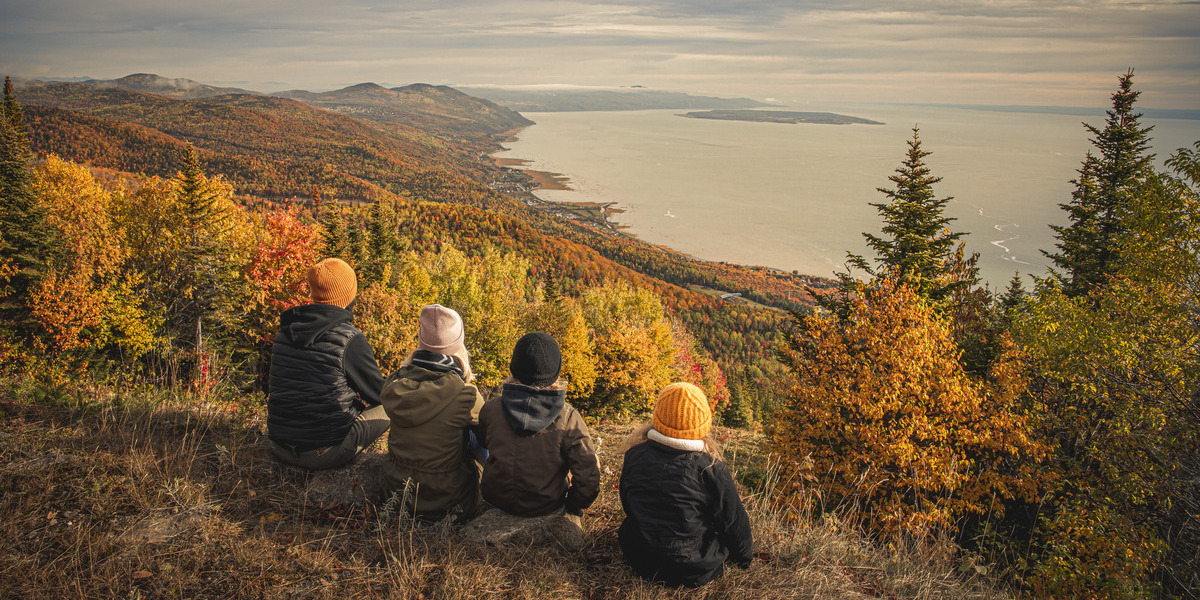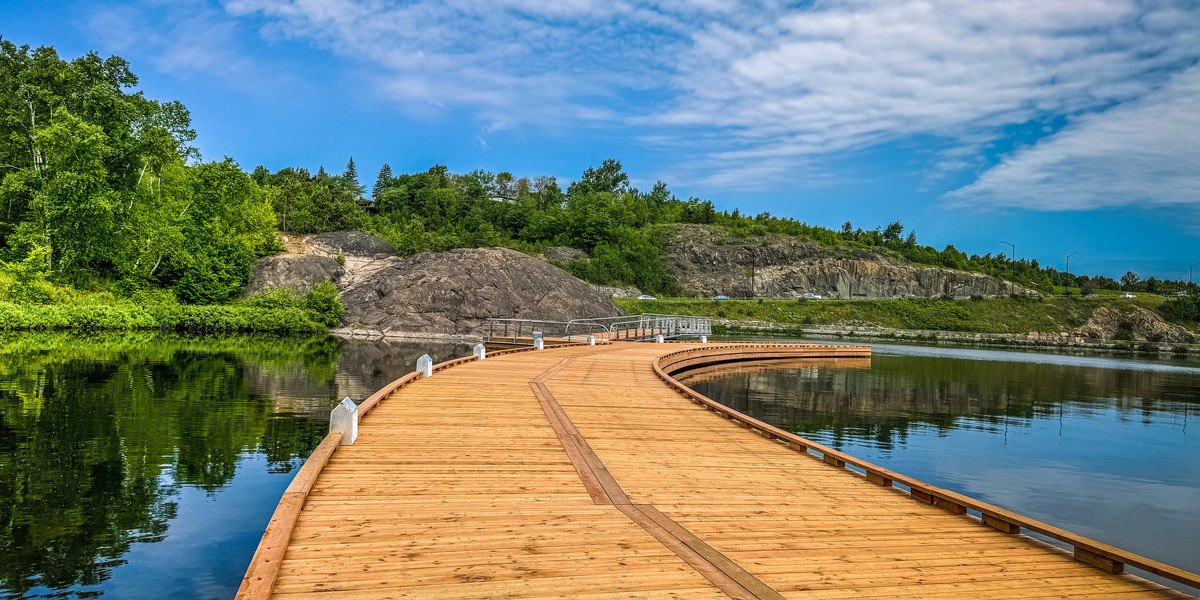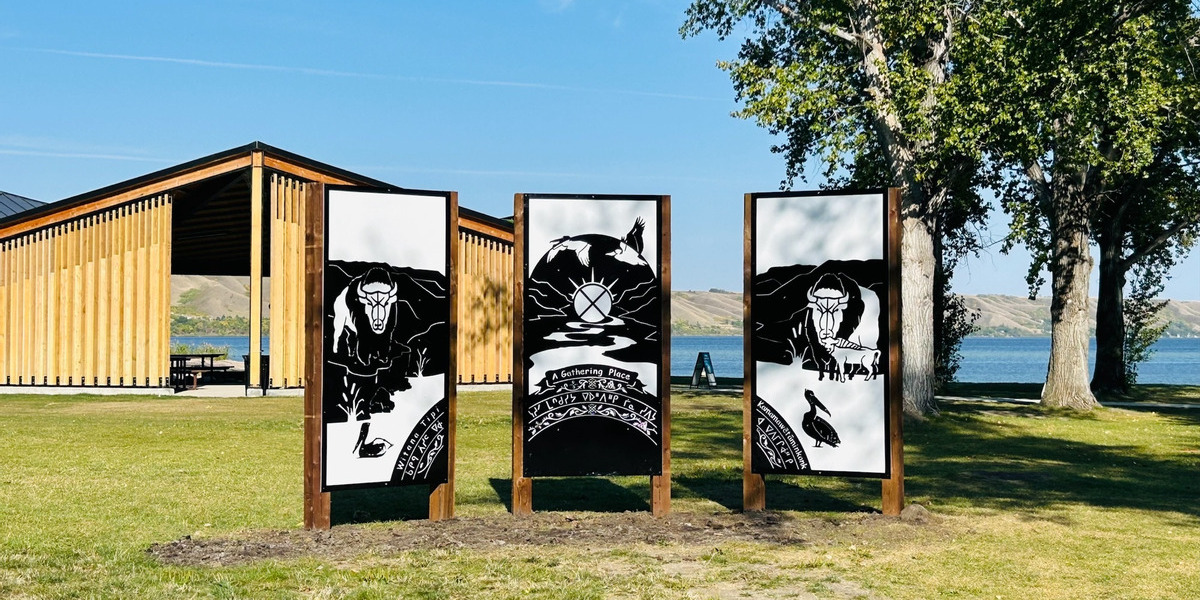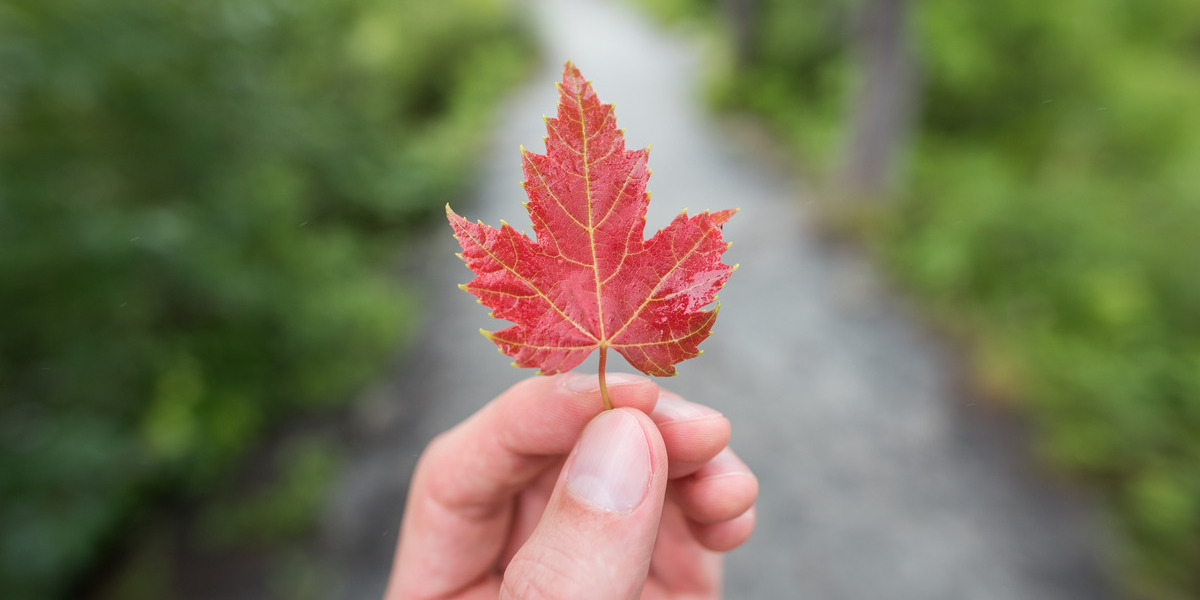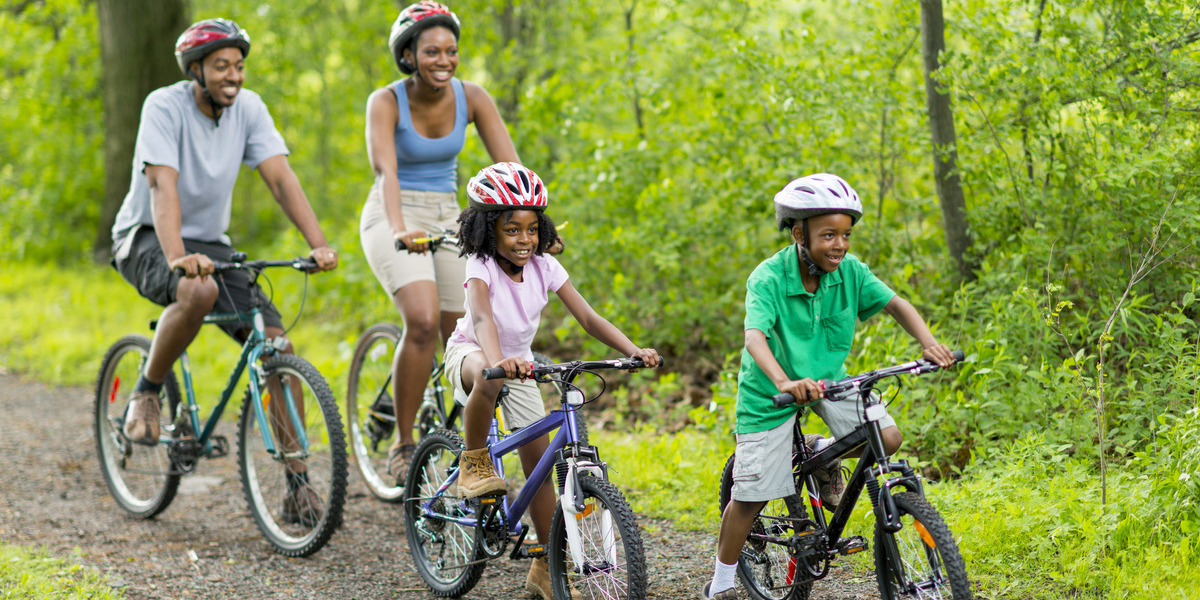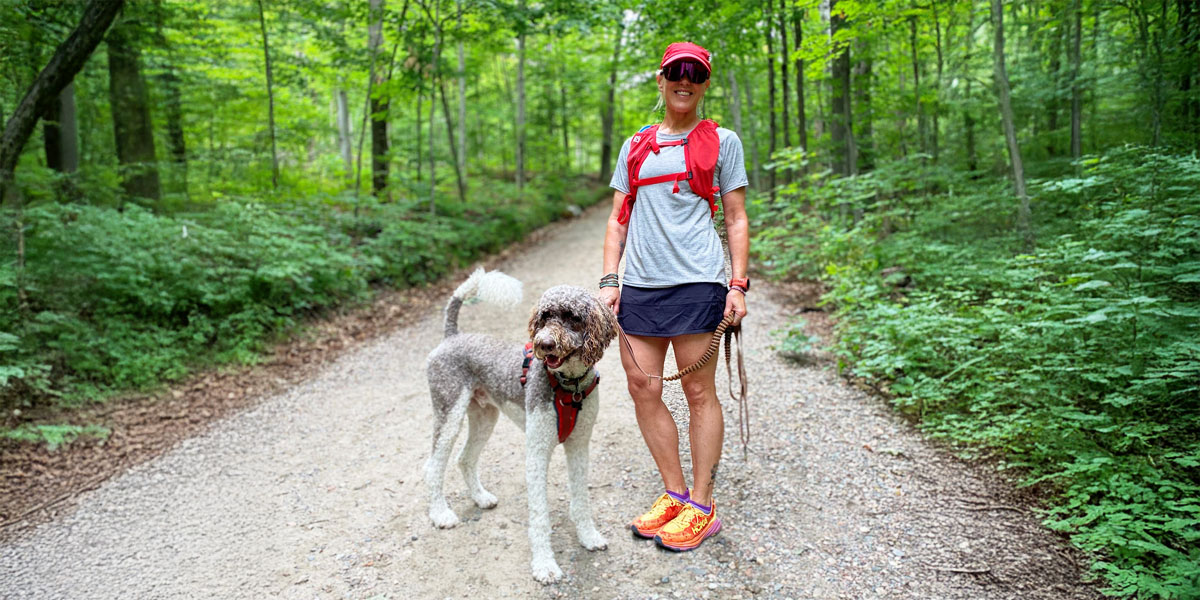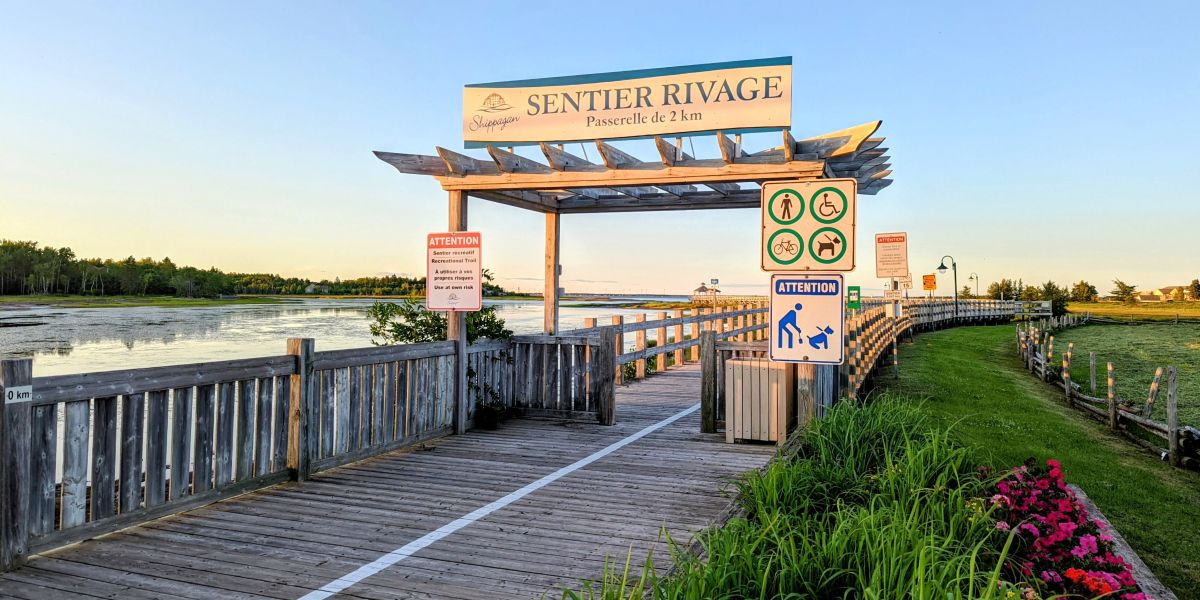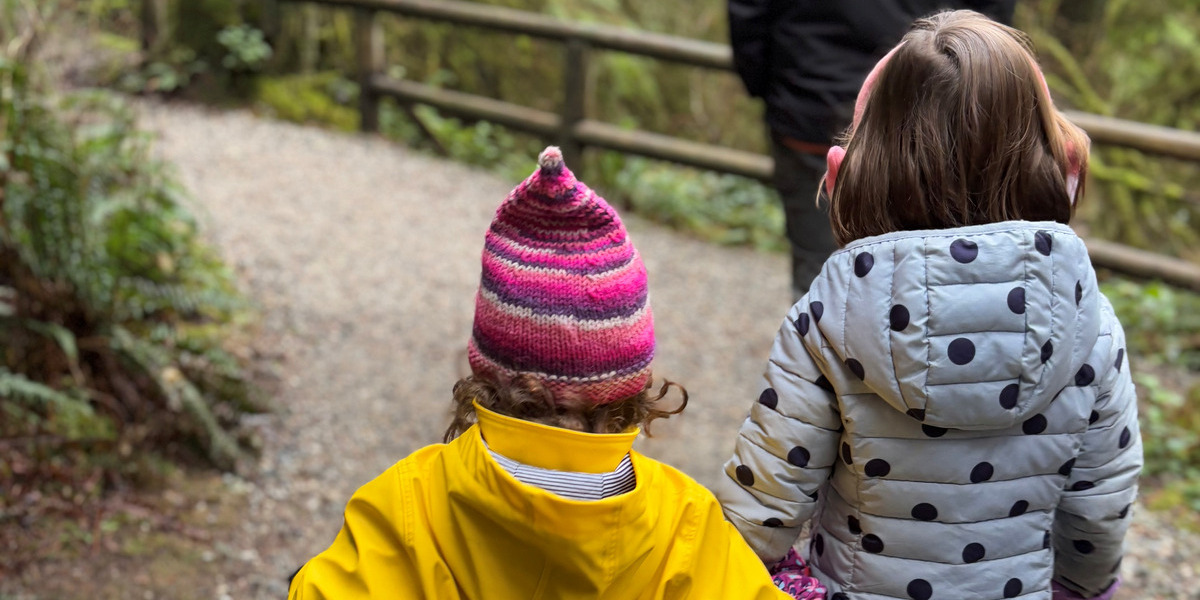Making Nature Accessible: BlindSquare on the City of Victoria Trail
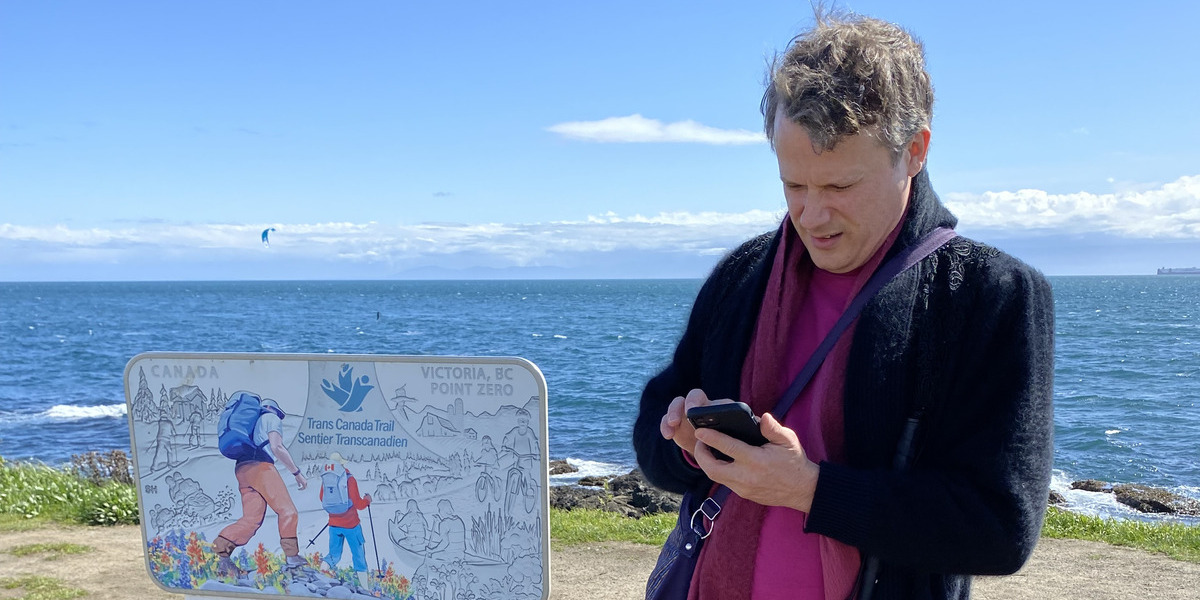
A Q&A with Michael Moore
Meet Michael Moore, a lived experience consultant with the City of Victoria’s Office of Equity, Diversity & Inclusion. They recently chatted with us about the recent implementation of the BlindSquare app, a free-to-download navigation app for people who are blind or partially sighted, on the City of Victoria Trail — and about the impact of access to nature for all.
TCT: Prior to BlindSquare, were you getting out on trails, and if so, how?
MM: No, without direct and continuous assistance, I wasn’t able to access anything like this.
You know, if I was to go into nature, it would have to be with my family on a camping trip.
I’m totally blind. I’ve got retinitis pigmentosa, which has completely reduced my vision to nothing at this point. So, I could kind of find my way around, but, really, adventuring was not my strong point. Without something like BlindSquare, if I hadn’t memorized everything prior to going out, I wouldn’t know where I was going. And I wouldn’t go to those places.
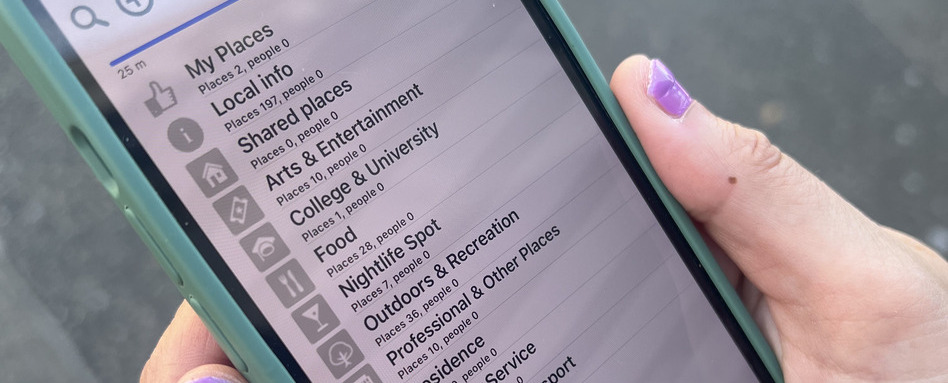
BlindSquare app on mobile phone, photo credit: Janice Valant
TCT: How did you get involved with the City of Victoria, and what was the process of piloting BlindSquare in your community?
MM: My whole life has sort of been leading up to this situation that we’re in now. I’ve got a genetic mutation that I inherited through my mother from my grandfather. Losing your vision — losing any of the primary senses — has a massive impact on your life. And I didn’t really know how to deal with it. I went through a huge depression. I went through very destructive cycles. So, I got to a point where I asked myself, am I embracing my life and moving forward, or am I just giving up?
So, I started volunteering at the CNIB and I became a phone counsellor and eventually an in-person group counsellor. I did that for eight years and then I became a group leader at the James Bay Community project, leading a low vision support group there.
Through that, I met the wonderful team from the Office of Equity, Diversity, and Inclusion at the City of Victoria. They invited me down to City Hall to meet some other people, and I became the first lived-experience consultant for the EDI Office. The very first project that we were working on was BlindSquare. This is the next step forward in helping people access the world around them and just trying to improve their lives.
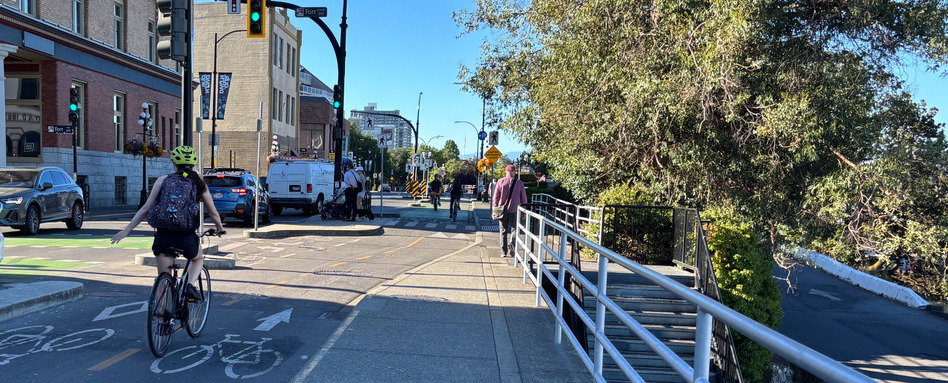
Photo credit: Amy Schwartz
TCT: How did you decide what to add to the app?
MM: It was a step-by-step process. We would go to the Trail, and, working with CNIB in Toronto, we would consider wayfinding and what we wanted to have in certain places, how elaborate we wanted it to be, and we would go experience these new points.
That was where the real magic happened for me, because we went to Point Zero West of the Trail and just started looking around, and instantly there were things that I had just assumed I wouldn’t be able to find. You know — there’s a garbage can at 2:00 o’clock, 5 metres away. I’ve gone, like, whole days just stuffing garbage in my pockets because I couldn’t find a garbage can. Just to have something as simple as there it is, you can find it, do what you need to. It was just magic: water fountains, picnic tables, these things just sort of sprouted up like out of the ground.
It suddenly made the world a lot more colourful.
We worked our way along, kilometre by kilometre. We included messaging on the app that advises on safer routes, and?things like that. We’ve refined it over time. Now that we’ve completed that kind of testing, it’s an incredibly contiguous experience. You start at one end [of the City of Victoria Trail], and it basically guides you right to the other end.
TCT: What has feedback been to BlindSquare when you’re out on the Trail?
MM: A lot of the feedback comes from my travels in my day-to-day life because I love to talk, and I love to meet people. And when I tell people about the BlindSquare app, it just blows their minds. I really see this as a more universal app than just for people with low vision and blindness, because it’s just so inherently useful. All the businesses are there. All the intersections are there.
TCT: What impact does being able to access nature much more easily have on your life?
MM: The impact that it has on people is immense, you know. A fully capable person can just see their way and hear their way to wherever they want to go. And being able to access nature and get out of the city is incredibly beneficial thing for our mental well being. When a person with a disability is denied access to things like that, it has a huge impact. BlindSquare is going to transform the way we approach a trail or a park or, or really any part of a city where something like this exists.
For me, getting out on the Trail and just feeling like I can do it is a major pick-me-up. Being able to get to those sorts of beautiful places and experience it has a huge impact mentally. It gives you the sense of the world coming back around you; you know, a sighted person just looks around and there’s trees. There’s the mountain in the distance. There’s where I’m going on the Trail. That world of understanding came back to me, the sense of feeling liberated. It’s like opening for a little window in your heart and suddenly you know you’re back. The world is at your feet, and you’re part of it.
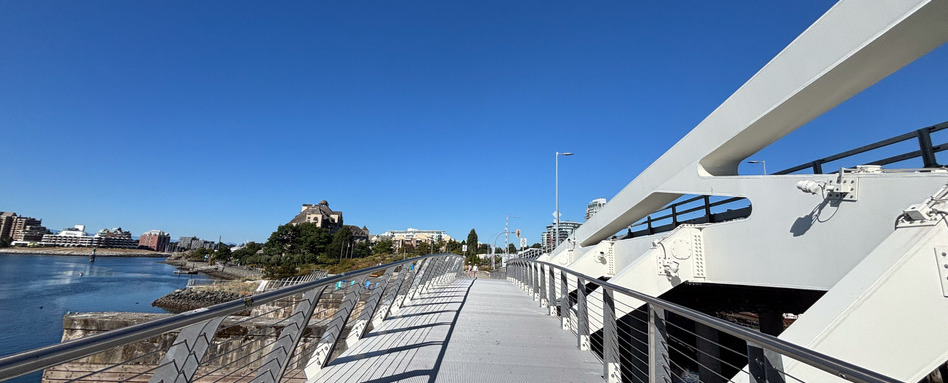
Photo credit: Amy Schwartz
TCT: What would you suggest to other communities looking to incorporate BlindSquare?
MM: Think big. And engage with lived-experience consultants. I can see where this is going to expand the lives of other persons with disabilities and give them opportunities to have the same experiences I’ve had. And for organizations, engaging lived-experience consultants is very valuable, because you can’t get this information any other way.
Learn more about BlindSquare
Learn more about All Persons Trails
Main photo credit: Michael Moore


